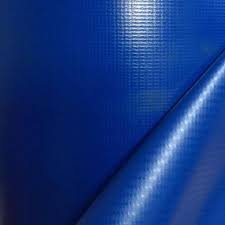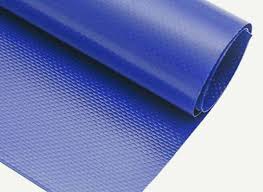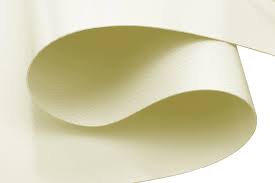Production process of PVC knife coated tarpaulin
The production process of PVC knife coated tarpaulin involves several steps, from raw material preparation to the final product. Below is a general outline of the process:
1. Raw Material Preparation
PVC Resin: Polyvinyl chloride (PVC) resin is the primary material used in the production of tarpaulin.
Plasticizers: These are added to the PVC resin to make it flexible. Common plasticizers include phthalates.
Stabilizers: These are added to prevent degradation of the PVC during processing. Common stabilizers include calcium-zinc and lead-based compounds.
Pigments: These are added to give the tarpaulin its desired color.
Fillers: These are added to improve the mechanical properties and reduce costs. Common fillers include calcium carbonate.
Additives: These may include UV stabilizers, flame retardants, and anti-fungal agents depending on the intended use of the tarpaulin.

2. Mixing
The PVC resin, plasticizers, stabilizers, pigments, fillers, and additives are mixed together in a high-speed mixer. The mixing process ensures that all components are uniformly distributed.
3. Compounding
The mixed materials are then fed into a compounding machine, where they are melted and homogenized. This process typically involves a twin-screw extruder, which ensures a consistent and uniform melt.

4. Calendering
The compounded PVC melt is then passed through a series of heated rollers (calenders) to form a thin, continuous sheet. The thickness of the sheet is controlled by the gap between the rollers.
5. Scraping (Optional)
In some cases, the surface of the PVC sheet is scraped to create a textured finish. This can improve the grip and aesthetic appeal of the tarpaulin.

6. Cooling
The hot PVC sheet is then cooled using a series of cooling rollers or a cooling chamber. This solidifies the material and sets its final dimensions.
7. Cutting and Trimming
The cooled PVC sheet is cut to the desired size and shape. Excess material is trimmed off, and the edges may be finished to prevent fraying.
8. Printing (Optional)
If the PVC tarpaulin requires any printing (e.g., logos, labels), this is done using specialized printing equipment. The ink used is typically UV-resistant to ensure durability.
9. Reinforcement
To enhance the strength and durability of the tarpaulin, a reinforcing layer (such as polyester or nylon mesh) is often laminated to the PVC sheet. This is done using heat and pressure.
10. Edge Sealing and Hemming
The edges of the tarpaulin are sealed and hemmed to prevent unraveling. This may involve folding the edges and stitching or heat-sealing them.
11. Grommet Installation
Metal or plastic grommets are installed along the edges of the tarpaulin to facilitate tying down or securing the PVC coated tarpaulin.
12. Quality Control
The finished tarpaulin undergoes various quality control checks, including thickness measurement, tensile strength testing, and visual inspection for defects.
13. Packaging
The tarpaulin is then rolled or folded, packaged, and prepared for shipment.
14. Storage and Distribution
The finished tarpaulins are stored in a warehouse and distributed to customers as needed.
Key Considerations:
Environmental Impact: The production process should consider waste management and recycling of PVC scraps.
Safety: Proper ventilation and safety measures should be in place to handle PVC dust and fumes, which can be hazardous.
Customization: The process can be customized to produce tarpaulins with specific properties, such as UV resistance, flame retardancy, or water resistance.
This process can vary slightly depending on the specific requirements of the tarpaulin and the equipment used by the manufacturer.




